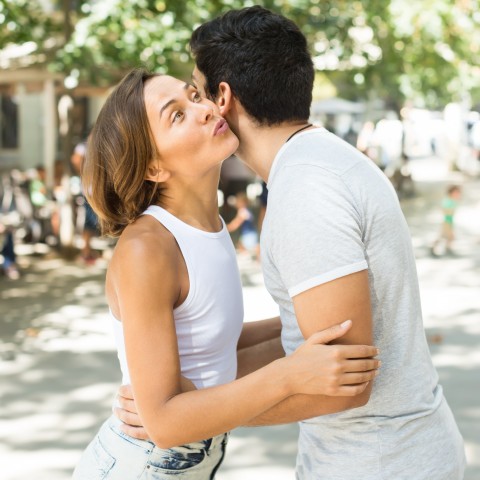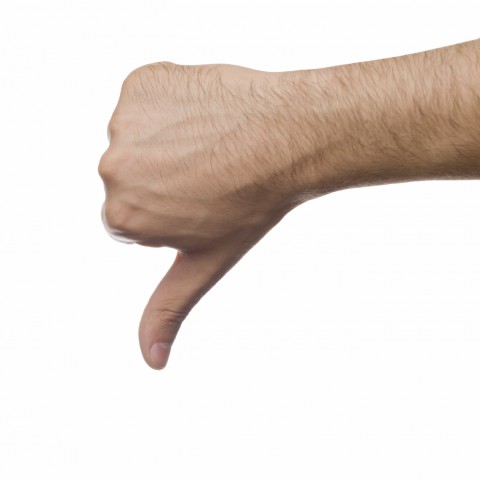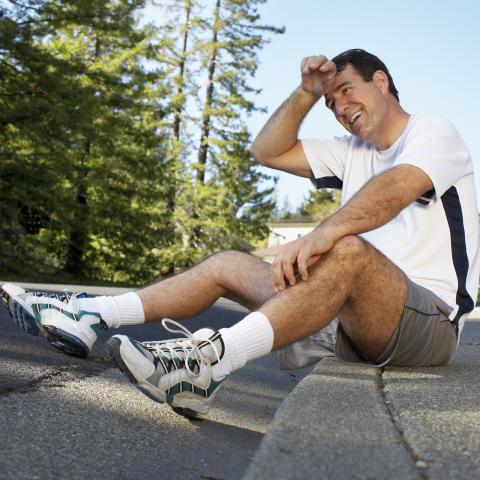
Are you planning a trip to the Netherlands but aren’t so confident in your Dutch language skills? If so, becoming familiar with Dutch gestures can make your upcoming visit much smoother!
Even if you’re nearly fluent in Dutch, it’s good to know the country’s hand and body gestures. This knowledge will help you understand the people better, allow you to convey meaning without words, and will most certainly impress your Dutch interlocutors. Once you start learning the common gestures and begin incorporating them naturally into your daily interactions, you’ll appear to be even more fluent!
So what are the most common gestures in the Netherlands? Does the Netherlands have a greeting gesture? Dive into this fun topic and become more fluent in Dutch without even using words. In this Dutch gestures guide, we’ll provide you with useful information about Dutch communication and introduce you to twenty fun Dutch hand and body gestures.

What Dutch hand gestures do you already know?
 Table of Contents
Table of Contents
- An Introduction to Dutch Communication: From Verbal to Non-Verbal
- Greetings
- Positive Gestures
- Negative Gestures
- Neutral Gestures
- How DutchPod101 Can Help You Learn Dutch
1. An Introduction to Dutch Communication: From Verbal to Non-Verbal
Before we teach you all about the Dutch hand and body gestures, we first want to tell you more about how the Dutch communicate. In both verbal and non-verbal communication, the Dutch have their own style of interacting with others.
Communication Style
The Dutch communication style is very direct. They speak frankly and don’t beat around the bush. Foreigners often misunderstand this direct approach as being rude, but the Dutch themselves view it as a clear and open way of communicating.
Something else that is typical of Dutch communication is its down-to-earthness. The Dutch generally don’t like people who over-exaggerate or those who are being excessively polite. In fact, the latter may cause a sense of distrust; the Dutch will perceive this excessive politeness as fake and lacking in the “Dutch directness.”
Dutch Formality
In the Dutch language, there is a formal way of speaking (U, the formal way of saying “you”) and an informal way of speaking (Jij/Je, the casual way of saying “you”). Now, the Dutch are generally not the most formal group of people. However, when speaking to an elder, it’s polite to use U until he or she indicates that you can use the casual form of speaking. In Dutch, the term tutoyeren refers to one’s ability to use the casual Jij or Je with someone.
On the other hand, this formal way of speaking is also used in workplaces and within some families. It really just depends on the situation. Whenever you’re in doubt, try to follow the example set by the people around you.
Personal Space and Physical Contact
The Dutch like their personal space and are not very touchy-feely, so try to give them their space. When talking to a Dutch person, try to maintain an arm’s-length distance from them.
Among friends and family, it’s okay to use physical contact. Light touching of the arms, shoulders, and hands, or giving a hug or kiss when saying hello or goodbye is generally acceptable in these cases. However, it’s not common to have physical contact with strangers, acquaintances, or colleagues.
Eye Contact, Body Language, and Dutch Gestures
As we said before, the Dutch are direct. For this reason, they like their conversation partner to make eye contact. This is seen as a show of sincerity and confidence. However, you should occasionally divert your gaze as making too much eye contact might make the other person uncomfortable.
Regarding gestures, the Dutch make more use of words than they do of their body language. However, there are some Dutch gestures you should know about. There are a variety of gestures for use in different contexts and situations, such as whether you’re chatting with friends or conversing with a stranger.
In the following sections, we’ll show you the most common gestures in the Netherlands, what they mean, and when to use which Dutch body or hand gesture.
2. Greetings
Most interactions begin with a friendly hello, so let’s look at some typical Dutch gestures used when greeting others.
1 – Hallo!
| Meaning: | “Hello” |
| How: | Raise your hand and wave it by moving it from side to side with a swaying motion. |
| Where / When: | This is one of the most common greeting gestures in the Netherlands. It’s an informal way to say hello or goodbye. It may substitute the handshake or kiss when there are many people to greet or when you’re out of arm’s reach. Don’t use it in more formal situations, as it’s too casual for serious business settings. |

Waving is a common Dutch gesture.
2 – Handen schudden
| Meaning: | To shake hands |
| How: | The Dutch like firm and short handshakes, with one or two up-and-down movements. You should look the person you’re greeting straight in the eyes. |
| Where / When: | In the Netherlands, shaking hands is the most common way to greet colleagues or strangers. It may also be used between male friends and family members. |

The Dutch Handshake
3 – Drie kussen
| Meaning: | Drie kussen means “three kisses.” It’s a very typical Dutch greeting custom. |
| How: | Lean forward and slightly brush cheeks with the other person while mimicking a kiss (with the sound and the lips gesture). Switch cheeks and repeat, and then switch cheeks again and give a last kiss. |
| Where / When: | It’s complicated… Have a look at our guide on how to introduce yourself in Dutch, where you can read everything you need to know about this Dutch greeting! It’s mostly used between a man and a woman, or between two women who are good friends or family. However, it is more common among young people today to give each other a hug or just one kiss on the cheek. |

What do you think about the Dutch “three kisses” gesture?
4 – Hoi!

Hoi!
5 – Alles goed?
| Meaning: | “What’s up?” |
| How: | Sharply nod your head upward. |
| Where / When: | This is another way to greet someone from a far distance. It’s a way of showing someone that you recognize and greet them, without making it very personal. It’s mostly used between men who don’t know each other that well. It’s like saying “Hey, what’s up?” without really expecting an answer. It can sometimes be interpreted as mildly aggressive or direct, as it’s connected to a macho attitude or to marking one’s territory. |
- ➜ As you can see, there are many Dutch gestures to choose from when greeting someone. To back up your gestures with words, check out our list of Common Ways to Say Hello with audio recordings.
- ➜ Would you like to match these greeting gestures in the Netherlands with some words of introduction? Have a look at these 10 Lines You Need for Introducing Yourself.
3. Positive Gestures
Are you impressed with something your Dutch friend said? Or maybe you’ve just finished eating a delicious meal and want the cook to know how much you loved it? Here are a few Dutch body language gestures you can use to express your positive feelings about something.
6 – Leuk!
| Meaning: | “Good!” or “I like it!” |
| How: | Make a fist and extend your thumb upward to give the “thumbs-up” gesture. |
| Where / When: | This true classic is also used in the Netherlands to show that you like something or think that something is going great. It’s not the coolest Dutch hand gesture to make, but it’s a nice way to show someone your appreciation. |

Dat vind ik leuk!
7 – Mmmmm, lekker!
| Meaning: | “Yummmm, tasty!” |
| How: | Place your hand to the side of your face and wave it back and forth. |
| Where / When: | If your mouth is full with something very tasty, make this Dutch hand gesture to show that you like the food: Mmm, lekker! You might also make it when someone is talking about good food or drinks to show that you like it. It’s quite an informal hand gesture and some people may view it as a bit childish. However, it’s a great gesture to give some positive food vibes. |
8 – Slim!
| Meaning: | “Smart!” |
| How: | Tap your temple several times. |
| Where / When: | You can use this Dutch hand gesture when you want to indicate in a funny way that someone has done something smart. But you can also use it when you think you have done something smart. This hand gesture is a bit cheeky, so it’s mostly used in informal situations. |
- ➜ Let’s match these positive Dutch gestures with some Dutch Words for Positive Emotions.
4. Negative Gestures
Life is not always gumdrops and lollipops, so you should also be aware of the most common negative Dutch gestures.
9 – Niet leuk…
| Meaning: | “Not good.” or “I don’t like it.” |
| How: | Make a fist and extend your thumb downwards to make the “thumbs-down” gesture. |
| Where / When: | Yes, this classic negative hand gesture is also used in the Netherlands. People use it to show that they don’t like something. However, it’s not used in very personal situations or in direct conversations, as this would be viewed as rude. It’s mostly used to show that you don’t like something or someone you’re talking about, but no one personally involved will see you make this gesture. For example, you could use this when talking with a friend about a certain celebrity. |

The classic thumbs-down sign
10 – Dat is niet mijn probleem.
| Meaning: | “Not my problem.” or “Not my fault.” |
| How: | Raise your hands slightly over your shoulders, palms toward the other person, with your head and shoulders defensively held back. |
| Where / When: | This Dutch body gesture is used to show that you don’t have anything to do with something—and you don’t want to. It’s an indifferent gesture, saying “Leave me out of it.” |

The Dutch shrug
11 – Poeffff!
| Meaning: | “Whew!” (an expression of “muchness”) |
| How: | Pass your hand across your forehead. Meanwhile, draw your fingers from open to closed-tipped out beside your head, as if you’re wiping your sweaty forehead. |
| Where / When: | This Dutch hand gesture might be used when someone is exaggerating a lot or making a lot of drama. It indicates that someone is a lot to handle. However, it has an additional meaning: it’s also used when “surviving” a tricky situation, as if you’re wiping your forehead after working hard. |

Just like wiping a sweaty forehead…
12 – Gek!
| Meaning: | “Crazy!” or “That’s nuts!” |
| How: | Grasp your hand in front of your nose, by first lowering your index finger to the thumb and then having your other fingers follow. |
| Where / When: | This Dutch hand gesture might be used in a good-humored way between friends, good colleagues, or family members. It is a playful way to say that the other person is acting crazy. But in other circumstances, it might also be used in a serious manner to say that someone is nuts. |
13 – Boeiend…
| Meaning: | “I don’t care.” or “I am not interested.” Boeien literally means “fascinating,” but in this case it’s used in a sarcastic manner to indicate disinterest. |
| How: | Stick your hands in your pockets or cross your arms. |
| Where / When: | This is considered a rude body gesture in the Netherlands as it’s seen as a sign of disinterest. Try to avoid this body language as it will be viewed negatively. |

Crossing your arms in the Netherlands is considered rude.
14 – Ben je dom?
| Meaning: | “Are you stupid?” |
| How: | With your index finger, give the center of your forehead one or several taps. |
| Where / When: | This Dutch hand gesture is used sarcastically to ask if someone is stupid. You might use this gesture in a conversation when talking about someone else, or use it directly with the other person. But watch out! It is a rude and aggressive gesture. Depending on the situation, you can also use this gesture to say that someone is crazy. |
- ➜ Now that you know all about these gestures, why not complement this knowledge with our lists of Phrases to Use When You Are Angry or these Dutch Words for Negative Emotions?
5. Neutral Gestures
Of course, you should also become familiar with Dutch body language for neutral, day-to-day interactions. Here are just a few of the most common gestures.
15 – Geen idee
| Meaning: | “No idea.” |
| How: | Spread your arms open with palms up. Raise and lower your shoulders. |
| Where / When: | This Dutch body gesture is mostly used to indicate that you’re doubtful or indecisive—you don’t know or you just have no idea. However, be careful when using this gesture as it can also express a more negative message when someone is asking you something. For example, it could be viewed as meaning “It’s not my fault,” “There is nothing I can do,” or “Don’t ask me.” |

I have no idea, geen idee
16 – Goed kijken
| Meaning: | “Watch carefully.” |
| How: | Using your index finger, pull down the bottom lid of one eye. |
| Where / When: | This Dutch hand gesture is used when you’re telling something secretive to another person, or something they might not have noticed (such as a secret, trick, or scam). It says “Pay attention and watch carefully.” |

Watch carefully!
17 – Ssst, stil!
| Meaning: | “Shhh.” or “Keep quiet.” |
| How: | Extend your index finger and place it vertically across your mouth. |
| Where / When: | You probably know this one already. It’s used to indicate that someone should be quiet. It may be used with or without the “shhh” sound. |

Ssssh!
18 – Geld
| Meaning: | “Money” or “It’s expensive.” |
| How: | Rub your thumb against the tips of your index and middle fingers. |
| Where / When: | This informal Dutch hand gesture is used in many situations where lots of money is involved. It’s most commonly used to indicate that something is expensive, but it can also mean that something is lucrative so that you or someone else can become rich because of it. |

Money, money, money.
19 – Min of meer
| Meaning: | “So-so.” or “More or less.” |
| How: | Place your hand in front of you, palm down, and tip it from left to right several times. |
| Where / When: | This Dutch hand gesture is mostly used in casual situations to indicate that something is going so-so. For instance, if you’re not having a great day, you could use it when someone asks how you’re doing. |

More or less
20 – Oh yooo!
| Meaning: | “Oh no!” or “Wow!” |
| How: | Raise your hand in front of your chest and shake it loosely, as if trying to revive your numb fingers. |
| Where / When: | This is not the most common Dutch hand gesture, and it’s mostly used between boys to express amazement or to indicate that someone is in trouble. It’s good to be able to recognize this gesture, but if you’re an adult, it’s better not to use it. |

Busted!
6. How DutchPod101 Can Help You Learn Dutch
In this guide, you’ve learned many Dutch body gestures and hand gestures for a variety of contexts. We have given you insight into the world of Dutch communication, both verbal and non-verbal. This knowledge will help you strengthen your Dutch speaking skills and sound more like a native in your interactions.
Do you feel ready to practice these gestures and spice up your conversations in Dutch? Or would you first like to hone your Dutch verbal communication so that you can find the words to complement these gestures?
Either way, DutchPod101.com is the best place to continue your Dutch studies. We have plenty of free resources for you, such as our collection of themed vocabulary lists to strengthen your knowledge of Dutch words and their pronunciation.
You can also make use of our Premium PLUS service, MyTeacher, to get personal one-on-one coaching from your own private teacher. What better way to really internalize the Dutch gestures and the words that match them? Your teacher will provide you with interesting exercises, useful recorded audio samples, and personalized feedback so that you can truly master all aspects of Dutch communication.
Happy learning!










